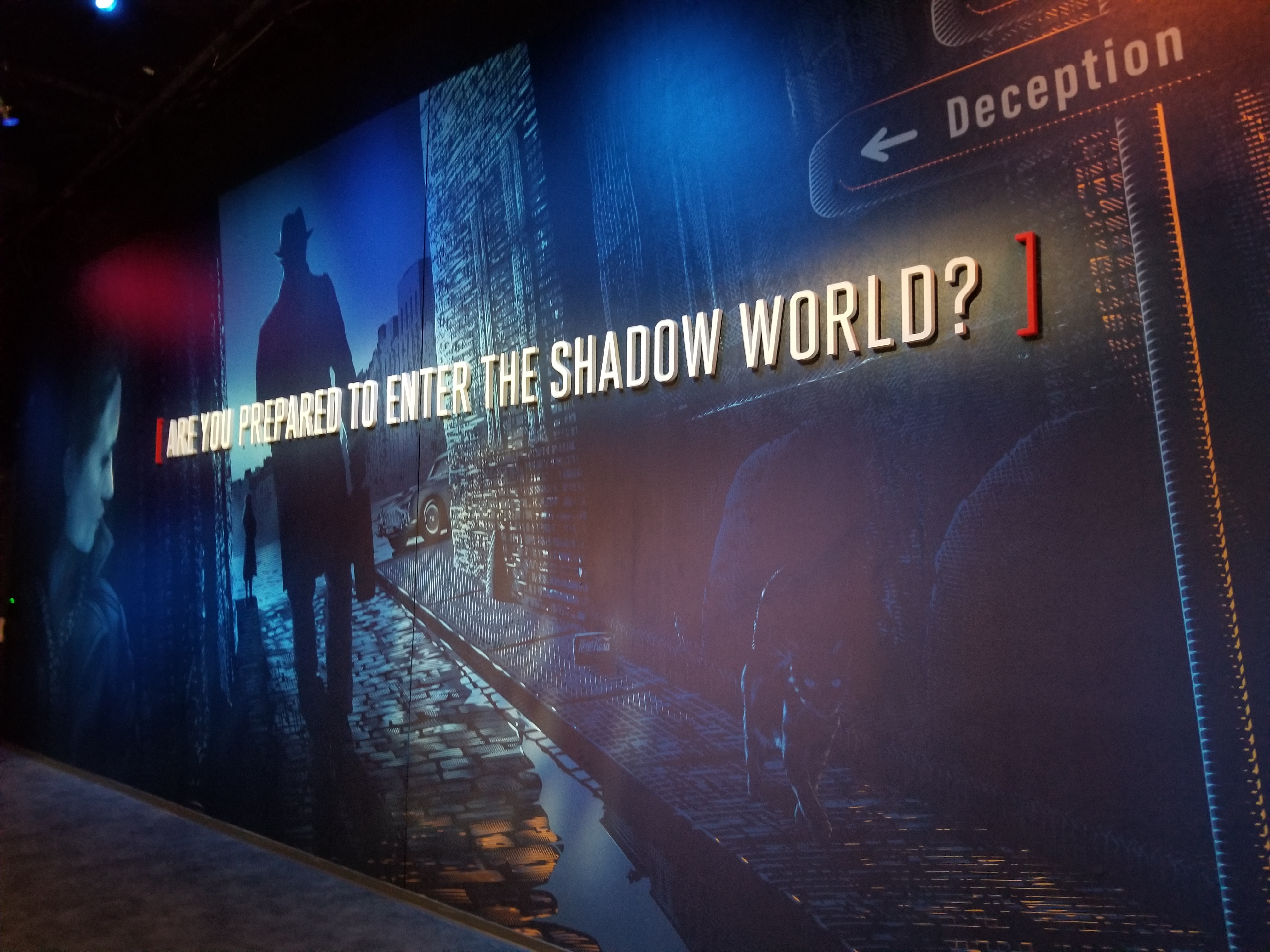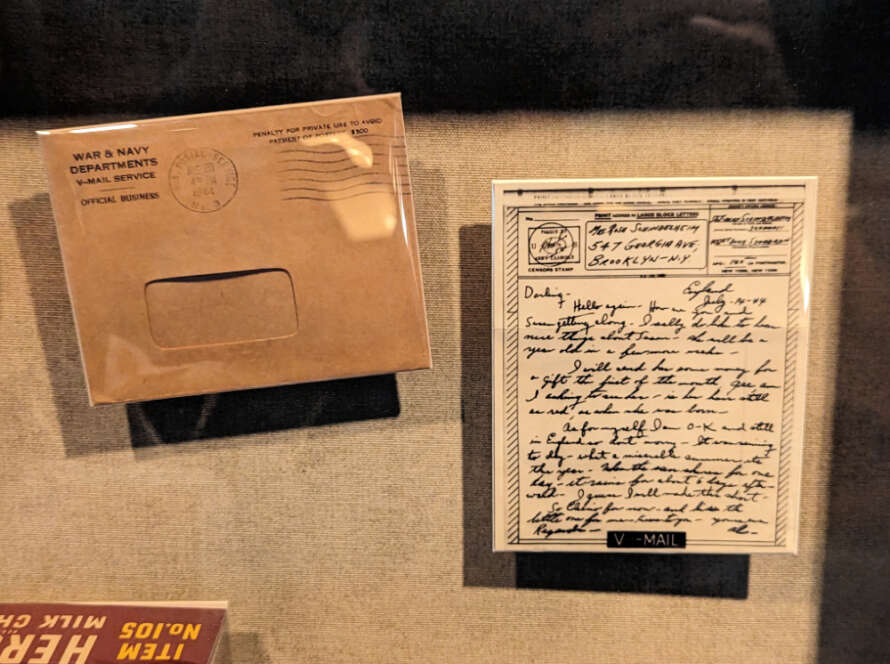“We’ve been here two hours and only seen half the first floor.”
An awed father said this to his son as they walked past us during our recent visit to American History. His comment is so relatable because many people struggle with this museum’s size.
It’s a wonderful way to explore American history hands-on with exhibits, old and new. However, with three floors jam-packed with thousands of items in permanent exhibitions and ever-changing display cases, it can be intimidating to explore with the family. You don’t want to leave with regrets because you missed something you were dying to see.
Over the twenty-eight years of our marriage, we’ve taken our six children to DC and the Smithsonian hundreds of times. Here are all the best tips and tricks we’re excited to share with you.
In this family guide to visiting the American History Museum, you’ll learn where to park and eat, which exhibits are best for which ages, and even how easy (or not) the museum is to navigate with a stroller. Most of all, you’ll see why the American History Museum has to be on your family’s list of what to see in Washington, DC.
Table of Contents:
American History Museum Family Guide
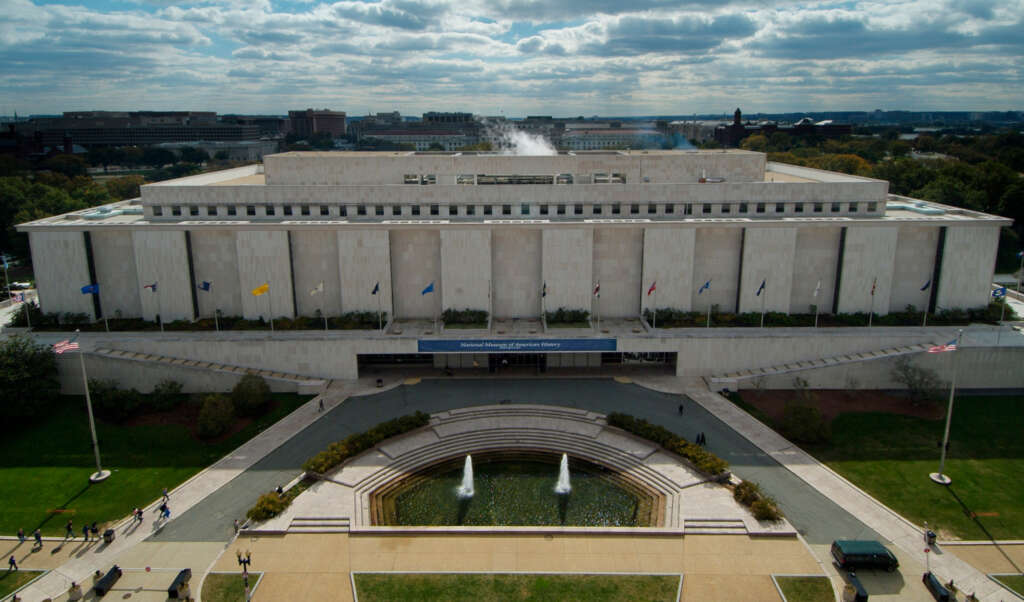
What Does It Cover?
The Smithsonian National Museum of American History covers the history of America from the earliest days of the Revolution through major modern events. It covers politics, war, entertainment, and more through documents, artifacts, and carefully curated displays.
Hours
The American History Museum is open 10 am-5:30 pm every day.
Tickets
Admission is free to all Smithsonian Museums, including the American History Museum. No timed entry passes are required.
Getting Here
Parking
There are two parking options available at the American History Museum, but we recommend only one.
- On-street parking. While slightly unpredictable, this option is preferable for most family visits to DC. The Mall has three-hour parking, while the streetside is two hours. If you arrive about 15 minutes before the museum opens, you have a good chance of a parking spot within walking distance. Three hours is most younger kids’ limit, giving you just enough time in the museum.
- Ronald Regan Building parking garage. The only parking garage by the American History Museum is underneath the Ronal Regan Building. Because it has government offices inside, there’s a vehicle inspection before entry, and you have to pass through security to return to your car. Due to the confusing layout, expensive rates, and difficulty entering, we don’t recommend this option.
Metro
We rarely take the Metro, but it’s a good option to get into the city without a car. Two Metro stops are within easy walking distance of the American History Museum.
- Federal Triangle on Pennsylvania and Constitution Avenue
- Smithsonian on the National Mall
The blue, silver, and orange lines run through both stations. The fare is $2.25 – $6.75 on weekdays or $13.50 for an unlimited all-day pass.
Bus
You also have a few bus options with stops outside the museum. While fun, they aren’t always stroller-friendly.
- Metro or Circulator bus with stops on Madison Drive and Consitution Avenue. The simplest route and cheapest fare option.
- Hop On, Hop Off and Old Town Trolley stop right outside the museum. More of an experience than public transport.
Bathrooms
The American History Museum has at least one large bathroom on every floor and near each museum entrance. All bathrooms have a large stall that can accommodate a stroller, a stone changing table, and a nearby water fountain/water bottle refill station. You can also find several large, single-occupant bathrooms throughout the museum.
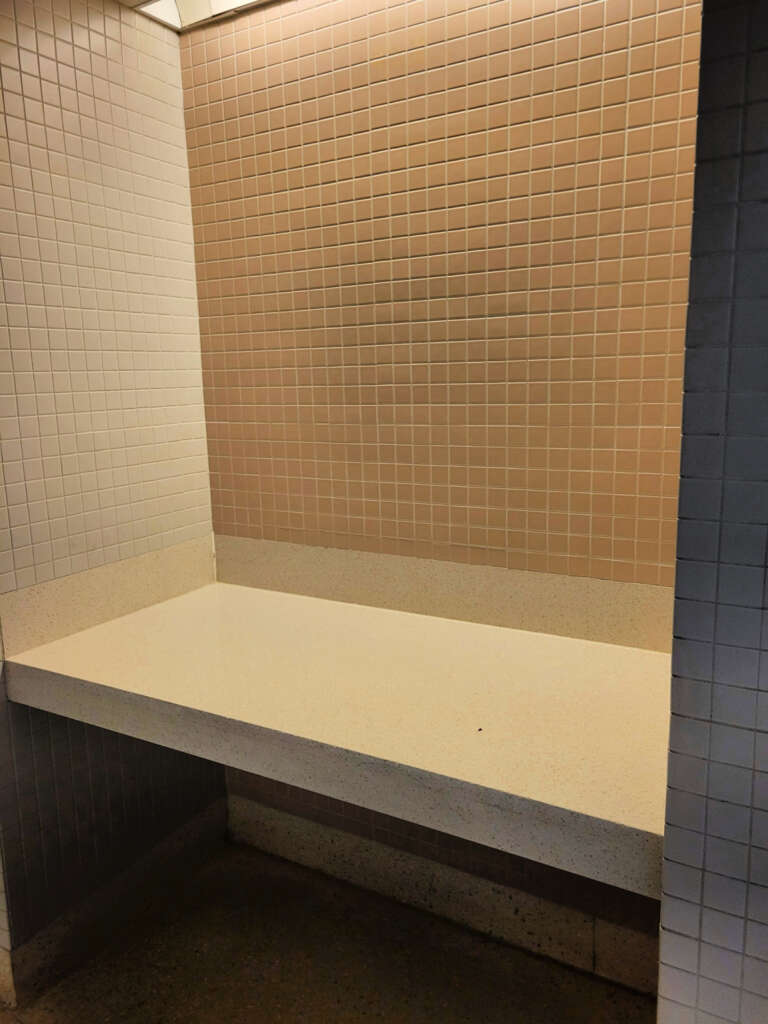
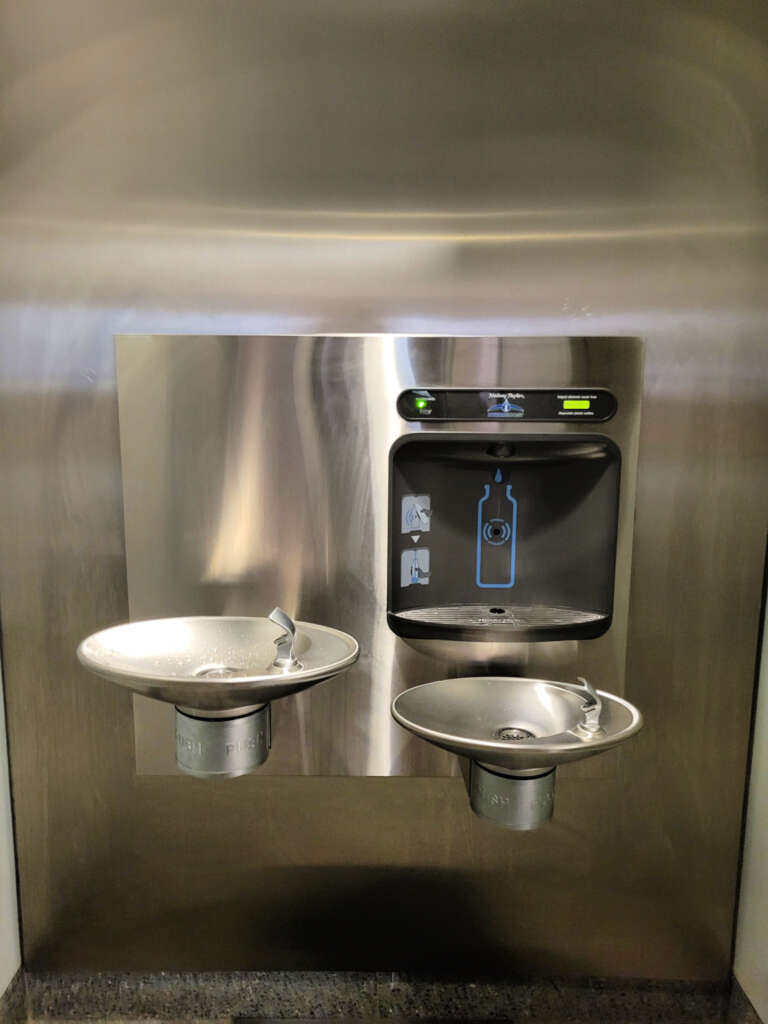
Family Friendliness
Stroller Accessibility
The American History Museum has large hallways and ample-sized elevators that easily hold even double-wide strollers. There are elevators conveniently located next to most of the stairs and escalators.
The exhibits themselves are also reasonably stroller-friendly. There are a few tight corners, and it may be a bit harder to navigate on crowded days. But you should have no problem going anywhere in the museum.
The American History Museum is also one of the few Smithsonian museums with ground-level entrances on both sides. No walking around the entire museum to find a stair-free option or bumping your kids up thirty stairs.
Nursing Options
We know finding good spots to nurse during a family trip can be challenging. Here are our top options.
- The Lactation Room. The American History Museum does have one nursing room inside the welcome center on the 2nd floor. It’s small but has two chairs and a locking door.
- The Power Machinery exhibit. This exhibit has several quiet benches tucked in the back, perfect for private nursing. Kids can explore the exhibit or the nearby America on the Move while they wait.
- Performance Plaza. There are several quiet benches with charging outlets along the walls by Object Project. Your kids can visit the nearby Wonderplace, Spark!Lab, or Object Project.
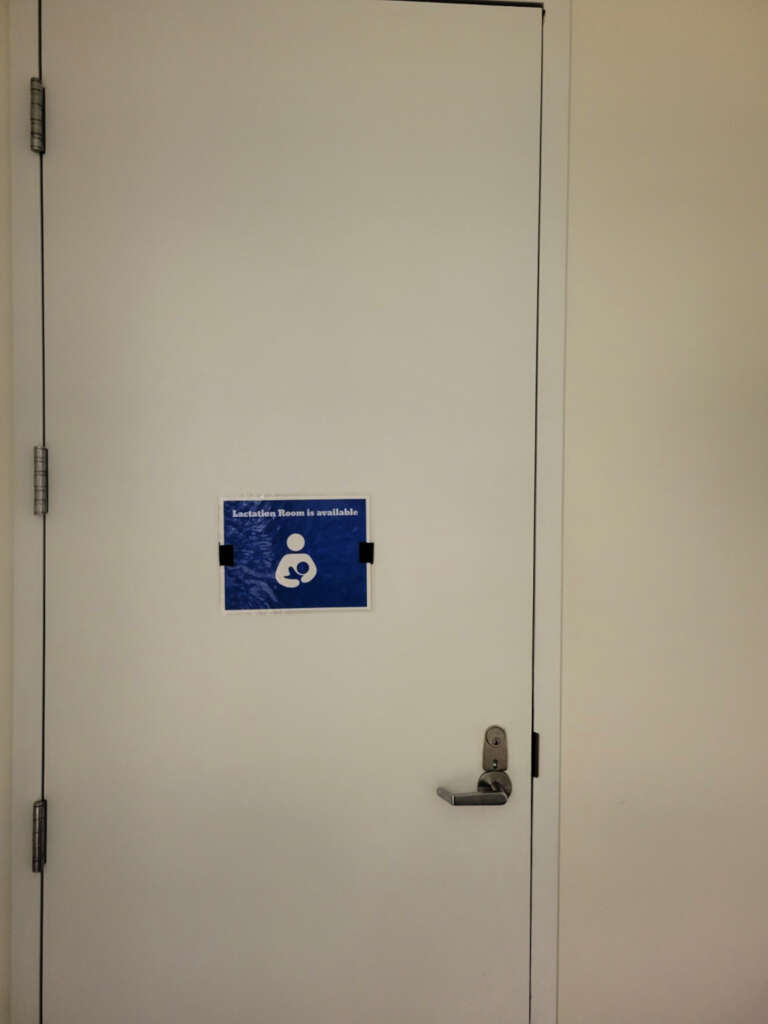
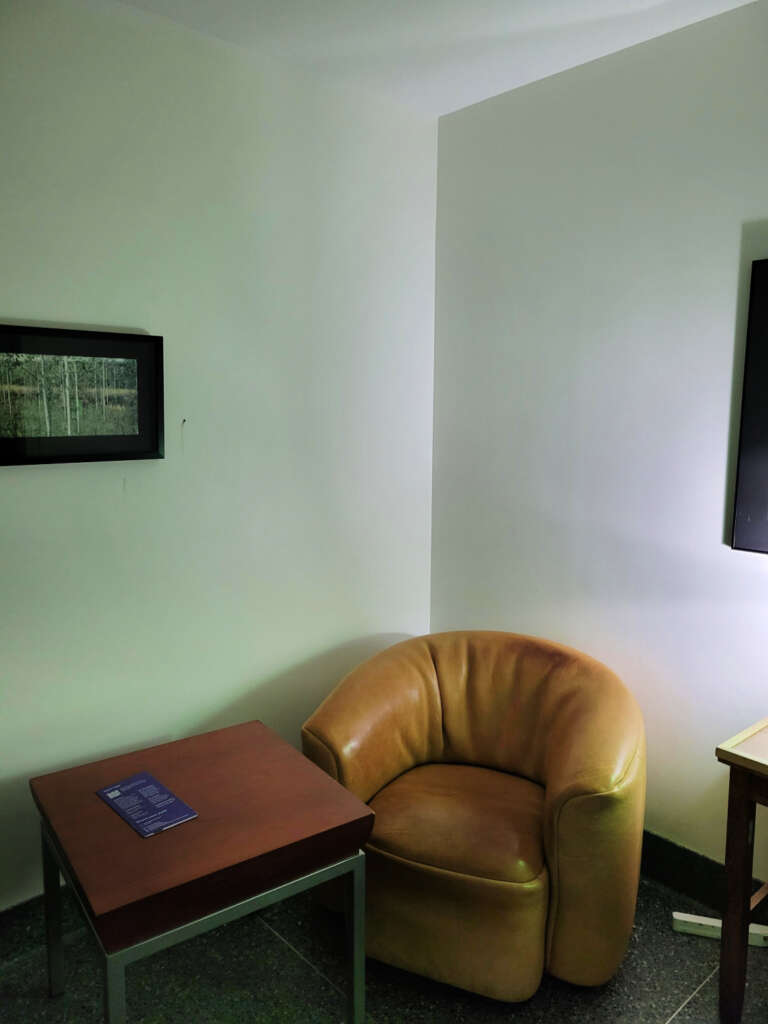
Play Spaces
There are plenty of interactive exhibits throughout the museum your younger children can enjoy. But they also have two child play areas on the 1st floor that you may want to check out.
- Spark!Lab. In this hands-on exhibit, kids ages 6-12 can experiment with relevant STEM experiments that ask them to build, invent, and think.
- Wegmans Wonderplace. For kids ages 0-6, Wonderplace provides age-appropriate activities, such as a toddler-sized Julia Child’s kitchen.
Both areas are only open at certain hours and times, so check their website before you go.
Free Storage Lockers
We all know how mom ends up carrying everyone’s coats before the day ends. Thankfully, the American History Museum offers over 158 lockers where you can leave your coats and backpacks during your visit. The lockers are free and easily accessible on the 1st floor next to the restrooms.
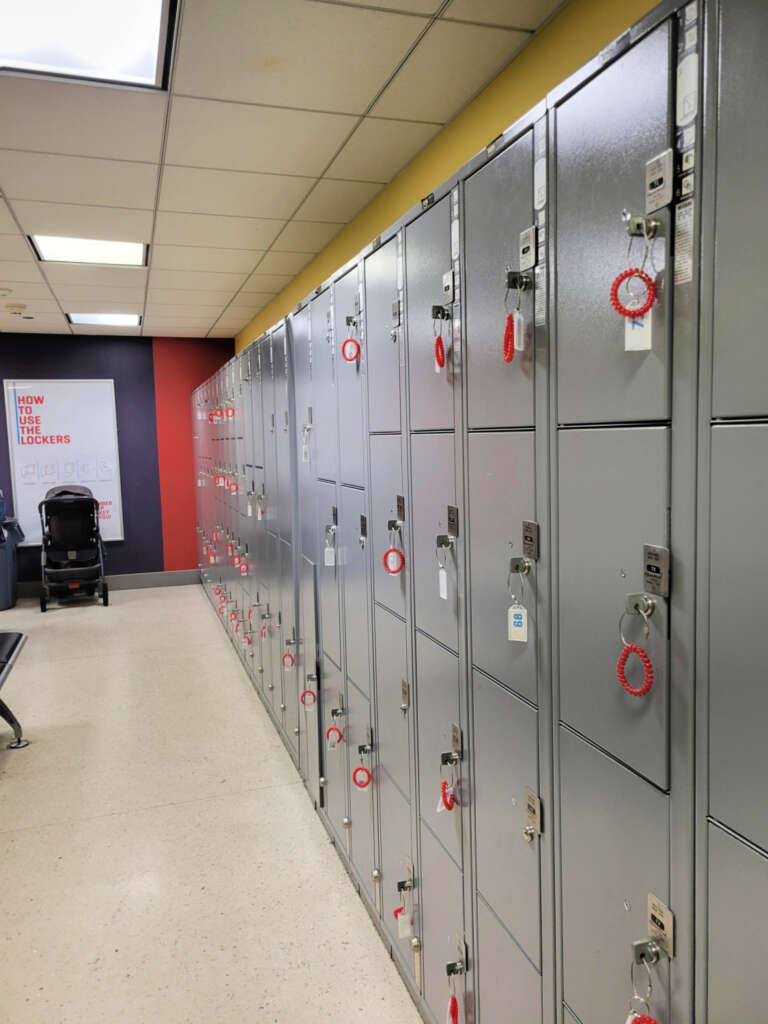
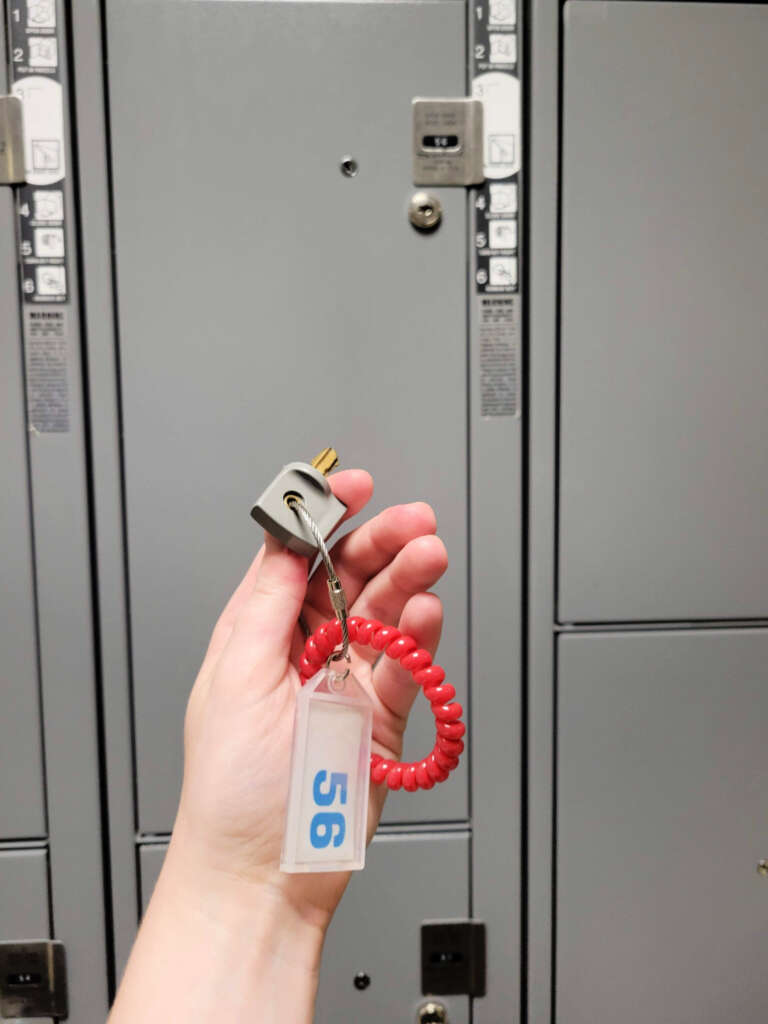
Food
Museum Restaurants
The American History Museum has two on-site restaurants.
- LeRoy Neiman Jazz Cafe on the 1st floor. A small cafe that plays jazz music and serves a small menu of sandwiches, soup, and drinks.
- Eat at America’s Table Cafe on the lower level. A larger cafeteria with a wide variety of food from around America. It’s only accessible by one small elevator or the escalator, which is tricky for strollers. It’s often full of school groups, especially at midday.
Both are pricey with mediocre food, but it’s convenient, which is sometimes all you want.
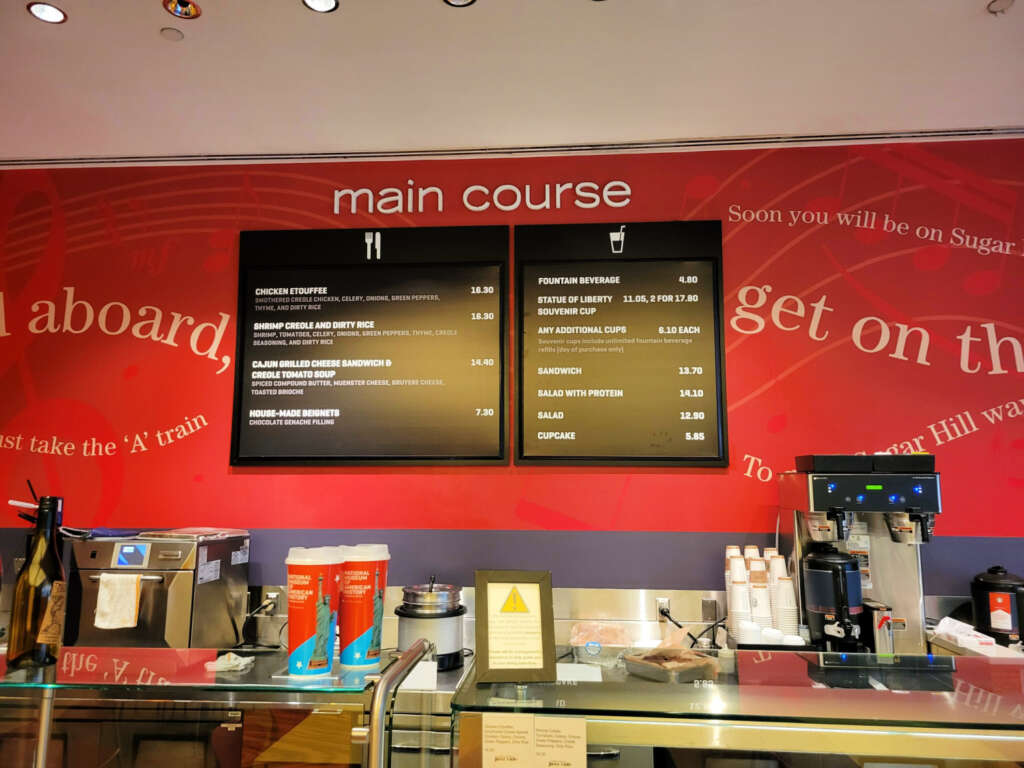
Nearby Food
If you want to leave the museum, there are a few nearby food options.
- Food trucks. There are always food trucks parked on both sides of the museum, with plenty of options. Once you have food, walk to the Victory Garden beside the museum for a quiet eating space.
- The Ronald Reagan Building food court. You will have to go through security to reach it, but it’s a good choice if you’re already heading back to the car.
Coffee
Both on-site restaurants serve coffee, and the Jazz Cafe now has Starbucks, although it is more expensive than usual. There are also several other Starbucks and a Panera Bread within walking distance.
Exhibits
Choosing which exhibits to visit is always tricky. You can’t see all the exhibits in one day, especially with kids. Pick which ones are your must-sees before you go.
In this section, we give suggestions on what to see or skip, as well as good age ranges for the exhibitions. But in the end, only you know which ones appeal most to your children.
The Top 5 Must-See American History Exhibits for Families
If you only have three hours in the museum and no preference on what to see, here are the top five exhibits we recommend. Click on the names to jump to the complete overview.
- Star Spangled Banner– 2nd floor
- America on the Move– 1st floor
- Power Machinery– 1st floor
- FOOD– 1st floor
- The Price of Freedom– 3rd floor
1st Floor
American Enterprise
An overview of commerce throughout American history, from the days of trading to modern chain restaurants and supply chains.
Best For: Elementary through high schoolers
Highlights:
- Several full-size vehicles
- Wall of inventors
- Interactive commerce games
Archives Center
A changing exhibit of documents and small artifacts from the archives. It’s a definite skip.
Best For: Teenagers
Smithsonian Libraries Gallery
A small changing exhibit of artifacts from the Smithsonian libraries, which is sometimes quite interesting.
Best For: Middle to high schoolers
The Vault of Money
A display of money from across American History and around the world. It not only shows how money has changed but explores the cultural meaning of money and its design.
Best For: Elementary to high schoolers
Highlights:
- Bank vault door
- Wampum
- 1933 double eagle coin
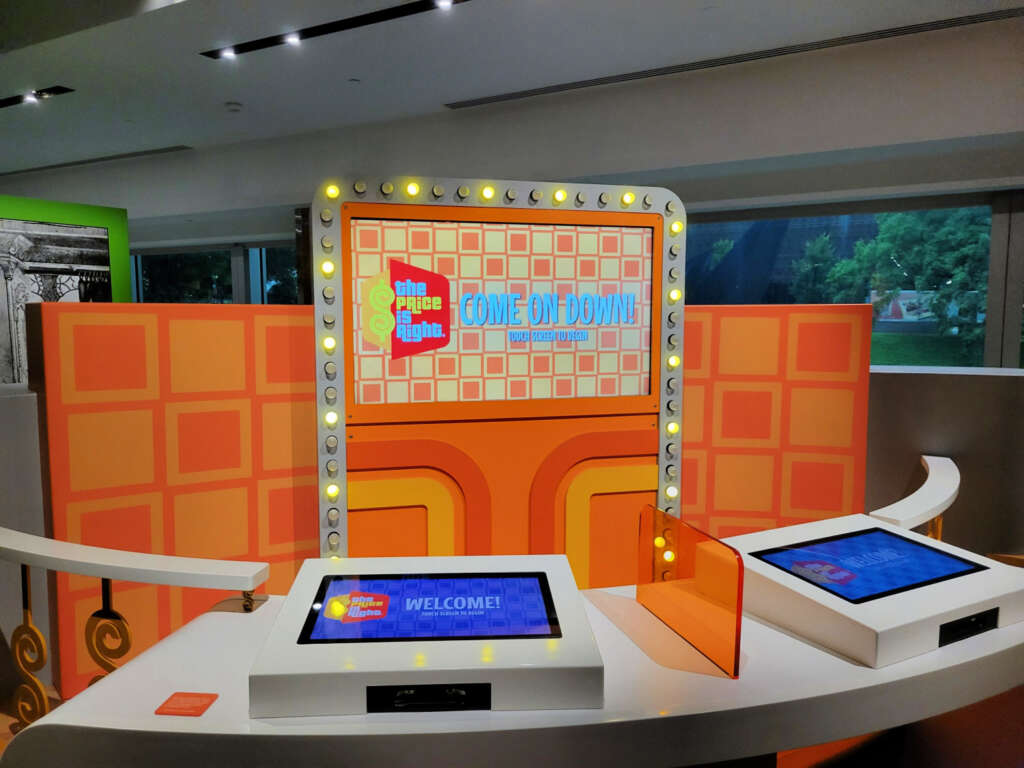
Object Project
This color exhibit showcases ordinary objects that had a large historical impact, such as refrigerators, sewing machines, and bicycles.
Best For: All ages
Highlights:
- Recreated penny-farthing bicycle that you can climb on
- Everyday objects seen in a new light
- Several interactive games
Change Your Game
Explore the history of sports and the technology that has launched them to new heights. Perfect for sports fans.
Best For: Middle to high schoolers
Highlights:
- Prosthetic for amputee athletes
- Original sports bra
- Prototype Cloud Crash football helmet
FOOD: Transforming the American Table
Food is an integral part of our country, and this exhibit explores how it and our relationship with it have changed over time.
Best For: Elementary to high schoolers
Highlights:
- Julia Child’s kitchen
- Vintage fast food containers
- Brewery history
On the Water
This exhibit shows how the Atlantic, Pacific, Great Lakes, and Mississippi River define the American experience from our country’s earliest days.
Best For: Elementary to high schoolers
Highlights:
- Large model boats
- Full-size historic boats and equipment
- Nautical swords
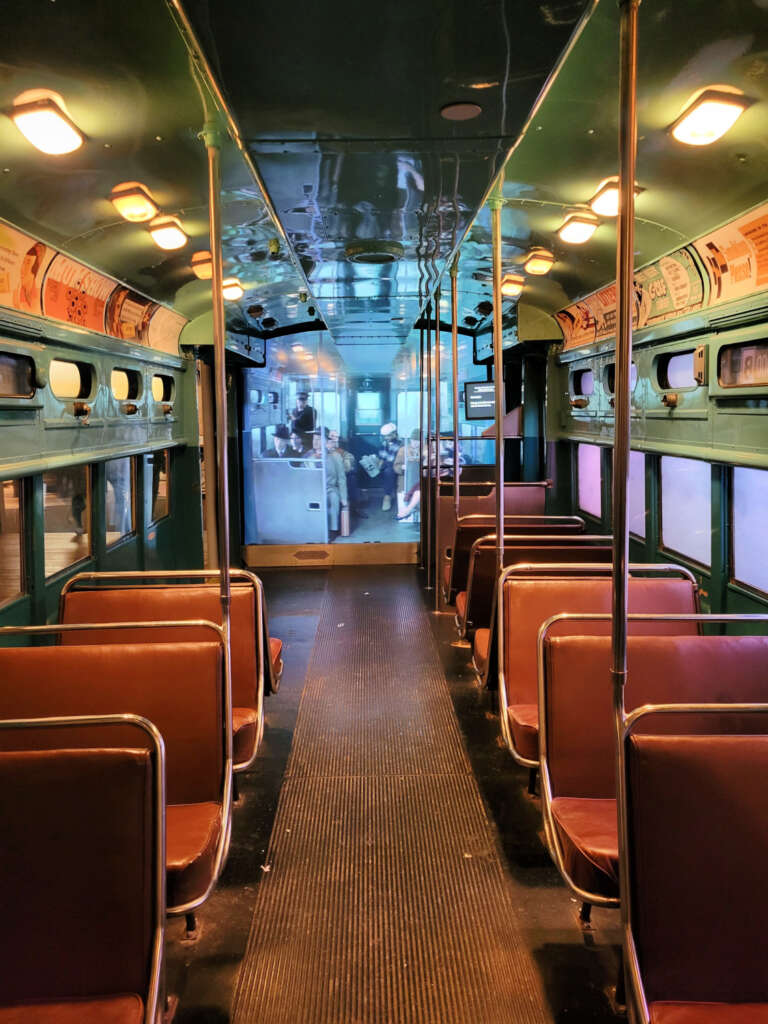
America on the Move
Your boys will love this exhibit full of actual vehicles throughout the history of America, from horse-drawn carriages to modern-day semi-trucks. But be warned, it gets pretty loud.
Best For: All ages
Highlights:
- 1942 Harley-Davidson motorcycle
- L car that you can climb in
- Vintage camper
Lighting a Revolution
This exhibit isn’t the most interesting unless you’re into electricity, as it’s one of the older exhibits. It can be worth a quick walk-through, though.
Best For: Middle to high schoolers
Highlights:
- An Edison lightbulb from Menlo Park
- Early electric gadgets, including plug-in socks
- Historic electric meters
Power Machinery
As the oldest original exhibit in the museum, exploring it feels like stepping back in time. It doesn’t have modern exhibits’ flashy bells and whistles, but it’s still cool.
Best For: Elementary to high schoolers
Highlights:
- Scale dioramas
- Full-size engines
- Holloway 10-horsepower engine of 1819
¡Presente!
Until DC gets a Latin American History Museum, this exhibit is the closest thing you’ll find.
Best For: Middle to high schoolers
Highlights:
- Bilingual displays
- Learning lounge for younger children
- Historical artifacts from sports, politics, and entertainment
Really BIG Money
You can walk through this exhibit about the biggest types of money in history in under five minutes.
Best For: Elementary to high schoolers
Highlights:
- Origami bird made from Venezuelan bolívar banknotes
- Taxidermied Quetzal bird
- 31-pound Swedish copper plate
2nd Floor
American Democracy
This exhibit on voting history in America is politically charged, making it best only for your more discerning children. It can be a good way to open discussions on modern politics.
Best For: High schoolers
Highlights:
- Historic voting booths
- Campaign pins
- The Declaration of Independence desk
Many Voices, One Nation
This exhibit asks, “What is an American?” and explores how the different people and cultures across America have contributed to our country.
Best For: Middle to high schoolers
Highlights:
- Carl Yastrzemski’s baseball helmet
- Artifacts brought by immigrants
- A gold miner’s trunk
Within These Walls
This is one of the most interesting exhibits in the museum as it explores the history of a single American home, from the days of the revolution all the way to WWII.
Best For: Elementary to high schoolers
Highlights:
- An actual house (the museum’s largest artifact)
- Artifacts from every era
- Interactive elements, such as laundry
The Star Spangled Banner
This is arguably the most influential artifact in the museum– the original flag from Fort McHenry that inspired Frances Scott Key to write the national anthem.
Best For: All ages
Highlights:
- The 200 year old flag
- Learn the history surrounding this moment
- Sewing supplies like those used to make the flag
3rd Floor
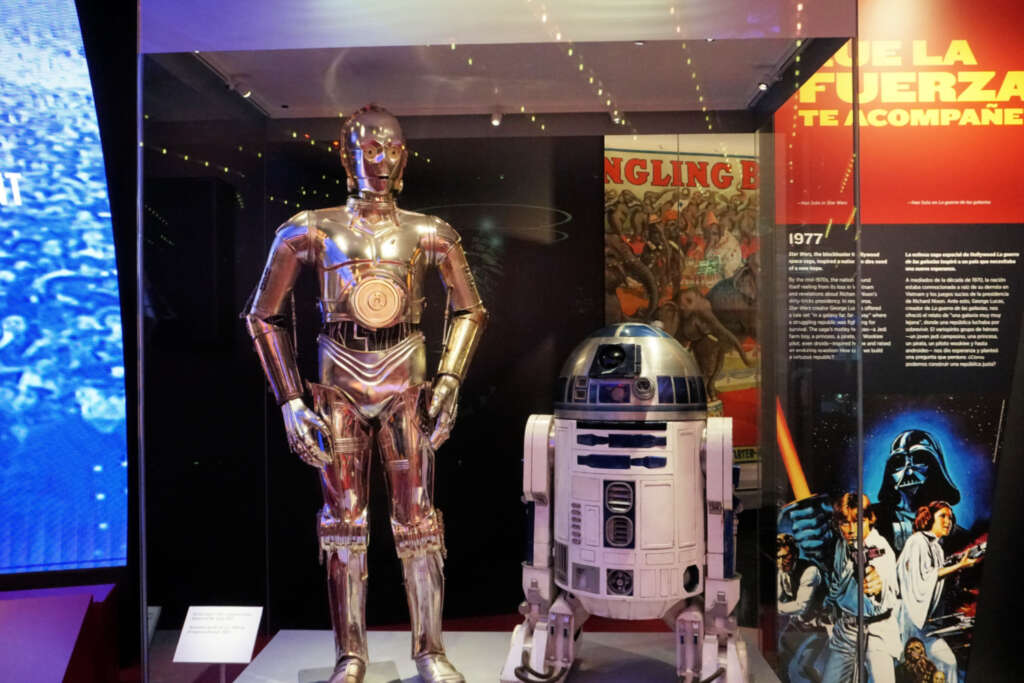
Entertainment Nation
American History’s newest exhibit is a riot of colors and sounds as you explore entertainment history in the United States.
Best For: All ages
Highlights:
- R2-D2 and C3PO from Star Wars
- Ruby Slippers from The Wizard of Oz
- Kristi Yamaguchi’s figure skates
Hall of Music
This small changing display of instruments is a quiet break from the rest of the museum.
Best For: Middle to high schoolers
Highlights:
- Valuable old instruments, such as Stradivarius violins
- Photos of famous musicians and conductors
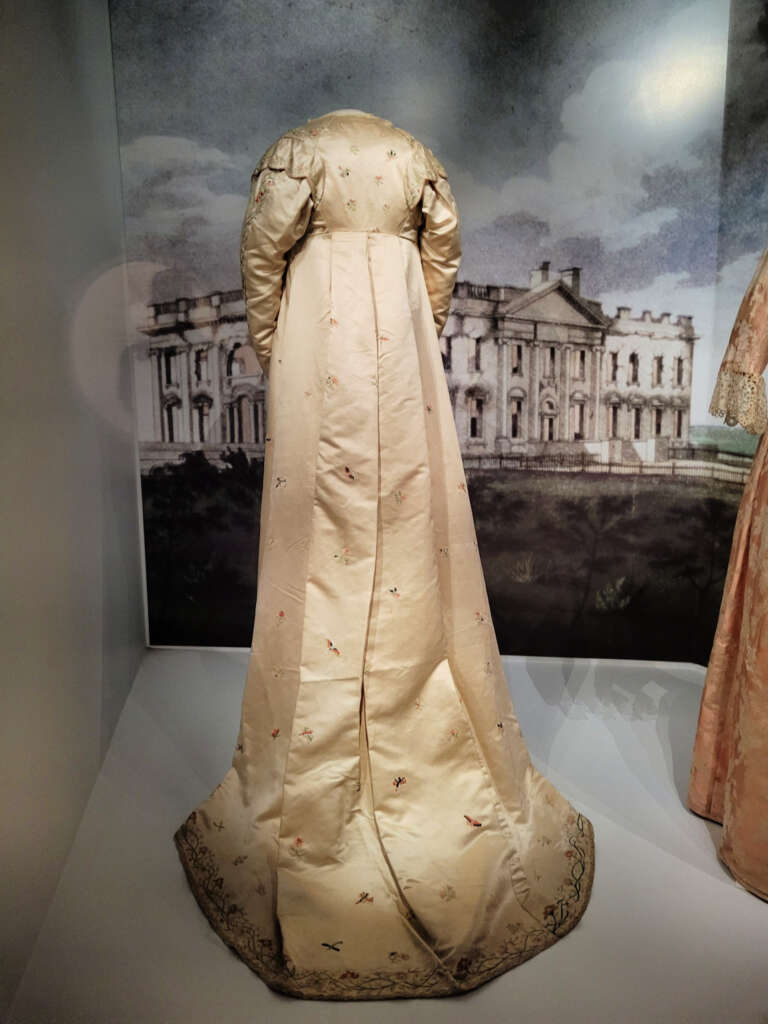
The First Ladies
This is one of the most popular exhibits in the museum for a good reason. You learn about the First Ladies while seeing their beautiful inauguration dresses.
Best For: Elementary to high schoolers
Highlights:
- Dolley Madison’s shoes
- Mary Lincoln’s dress
- The first lady’s china sets
The American Presidency
Compared to the exhibit about their wives, this one is unfocused. Skip it and see the dresses instead.
Best For: Middle to high schoolers
Highlights:
- Ulysses S. Grant’s ceremonial carriage
- Give a speech as the president
- Dollhouse made by a White House gardener for the Cleveland children
The Price of Freedom
This thought-provoking exhibit gives an overview of America’s wars, which have affected many people throughout history. It’s extensive but well worth the time to explore.
Best For: All ages
Highlights:
- George Washington’s sword and scabbard
- Willys Jeep, used during World War II
- Part of the Berlin wall
Gunboat Philadelphia
This display stands out from the rest of the museum, as it’s about a single artifact– a Revolutionary War gunboat.
Best For: All ages
Highlights:
- Nearly intact boat from 1776
- Relevant artifacts
- Footage of the boat’s recovery
The American History Museum is a great way to make “boring” topics like the president, war, and how our ancestors lived come to life for kids of all ages. It opens conversations, encourages interests, and helps all of you learn something new. We hope this family guide to the American History Museum makes your next visit a breeze.
Want more advice for taking your family to DC? Sign up for our weekly newsletter for more timely tips for your next visit.

